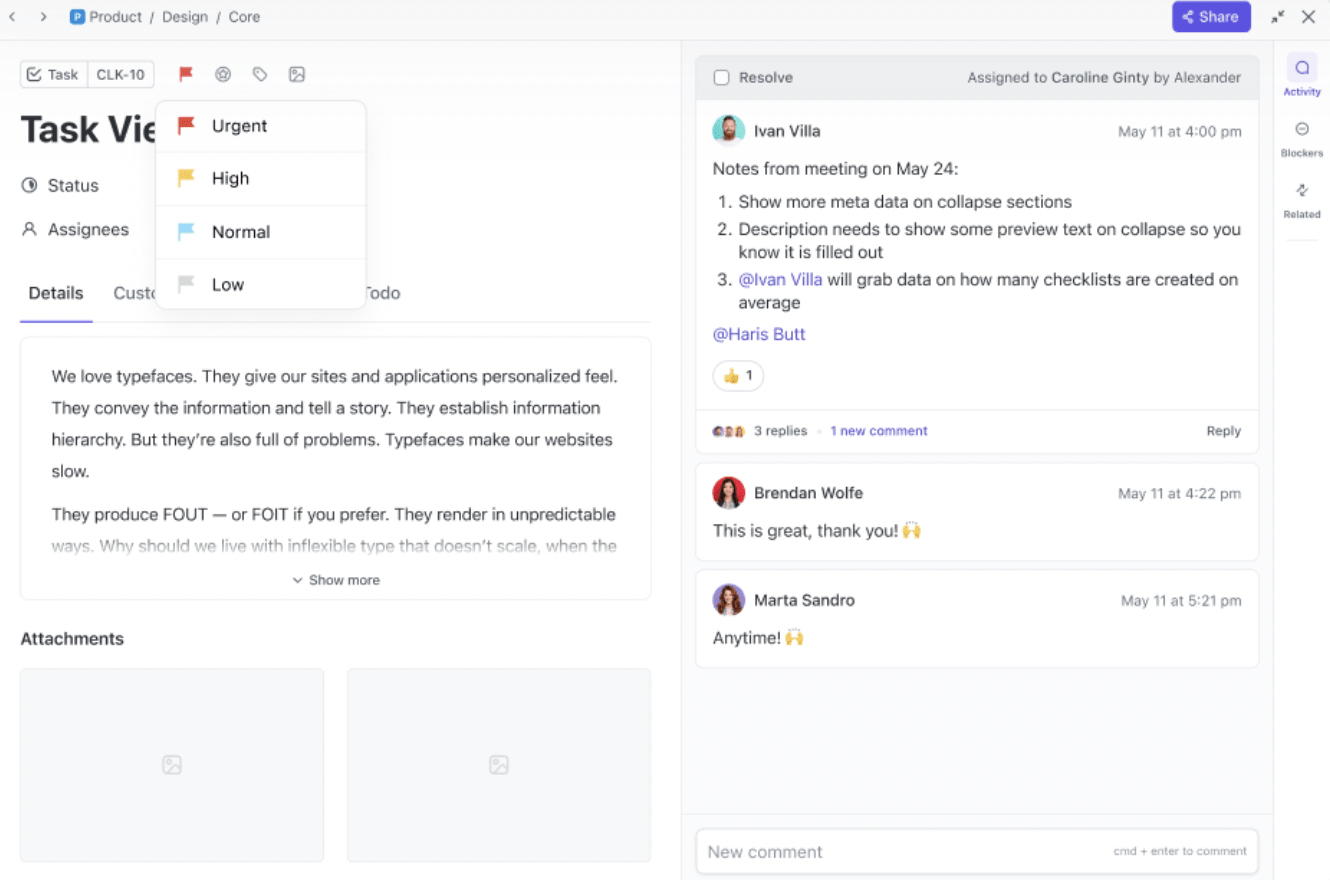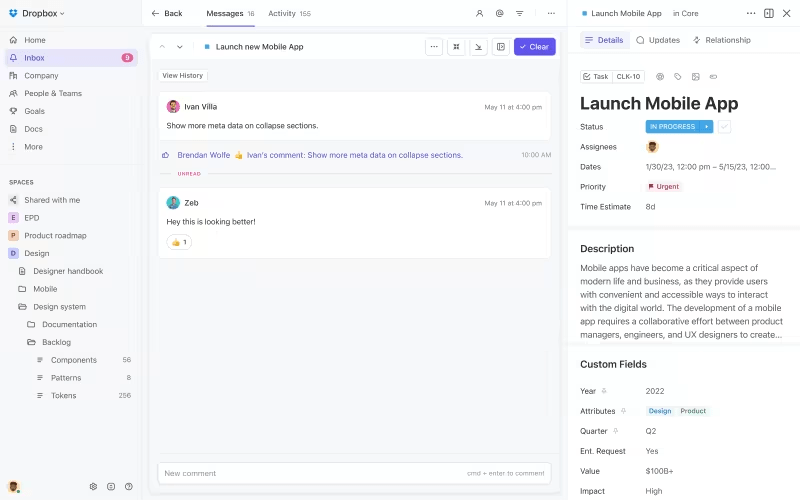How to Track Changes in Excel for Accurate Data Management

Sorry, there were no results found for “”
Sorry, there were no results found for “”
Sorry, there were no results found for “”

The quarterly report is due, and everything looks perfect. But the numbers don’t add up. Somewhere, somehow, the data has been altered. Your inbox is flooded with questions about the latest file update. Who changed what? When? Why?
For professionals working with Microsoft Excel, this is a recurring challenge.
Fortunately, Excel offers features to make change tracking easier. In this blog post, we’ll explore how to track changes in Excel to maintain control of your data while collaborating with ease.
🔍 Did You Know? Excel’s integration with OneDrive introduced the ability to view and restore previous spreadsheet versions.
Keeping track of edits can be challenging when more than one user works on a single Excel file. However, with annotation, you can ensure your data stays systematic.
Let’s break down the methods to track changes in Excel. ⚒️
The built-in Track Changes feature is a powerful tool for monitoring modifications in Excel. Follow these steps to use it:
Open the Excel file in which you want to track changes. Click on the Review tab located on the Ribbon.

Locate the Show Changes option in the Changes group. You’ll notice a pop-up on the side of your sheet.

🤝 Friendly Reminder: Always save your Excel document before enabling change tracking to ensure you have a clean version to revert to if needed. The Excel shortcut is Ctrl + S (Windows) or Command + S (Mac).
Click See new changes to notice the changes your team members make.
Use the When, Who, and Where filters to specify what changes to track, for instance, all modifications, changes by specific users, changes within certain ranges, or dependencies in Excel.

🤝 Friendly Reminder: Activating track changes turns your workbook into a shared one, which may limit some functionalities like sorting and filtering.
Creating a summary of changes on a new sheet for projects with numerous edits can streamline review and management. This method provides a clear overview of all modifications in one place, making it ideal for large-scale collaborations.
Here’s how you can do this. 👇
Go to the Review tab. Here, above the Ribbon, you’ll notice the Track Changes icon. Press the drop-down arrow to get the Highlight Changes dialog box.

🔍 Did You Know? Microsoft skipped the name Excel 6.0 entirely. After Excel 5.0 in 1993, the next version was Excel 95, aligning it with Windows 95 to create a unified branding approach.
Check the option labeled List changes on a new sheet in the dialog box. Click OK, and Excel will automatically generate a new worksheet that lists all tracked changes in a tabular format.


🔍 Did You Know? Excel was first launched in 1985 for the Apple Macintosh. It wasn’t available for Windows until 1987, making it one of the few Microsoft products initially developed for a competitor’s platform.
To track the most recently modified cell in your workbook, use Excel’s formulas and the Watch Window feature. This method is beneficial for monitoring critical data points and ensuring that unexpected changes are not overlooked.
Follow these steps. 📝
In an empty cell, input the following formulas:

🔍 Did You Know? ‘Excel hell’ describes the chaos of managing overly complex or poorly structured spreadsheets, especially in collaborative environments.

Go to the Formulas tab on the Ribbon. Then, click on Watch Window to open the monitoring tool.

🧠 Fun Fact: Some artists use Excel to create digital artwork, crafting pixel-like images with their grid of cells. One notable example is Tatsuo Horiuchi, a Japanese artist who paints intricate landscapes using Excel.
Select the cells containing the tracking formulas and click Add Watch… to keep them monitored, even when switching between sheets.


💡 Pro Tip: The default retention period for change history is 30 days. Adjust this as needed through Excel settings.
While change-tracking features enhance collaboration and project management in Excel, you may encounter certain drawbacks that act as roadblocks.
Here, we’ll explore some key restraints of tracking changes in Excel. 👀
📖 Also Read: How to Track Changes in Microsoft Word
🧠 Fun Fact: In Excel’s early versions, only one person could edit a file at a time. Collaborative editing in real time became possible with Excel Online in 2013.
If you’re switching from Excel to ClickUp, ClickUp’s Table View will feel familiar—rows and columns, but supercharged with project management capabilities.

Draw relationships between tasks, documents, and dependencies with its easy drag-and-drop interface. You can format your tables how you want, manage work with robust filtering and grouping options, and hide and pin columns for easy sorting. Think of it like a much more powerful Excel substitute.
Table View lets you collaborate in real time and share updates with publicly accessible project links. For added convenience, you can export Table View information as spreadsheets, making it simple to share or store the data elsewhere.
🧠 Fun Fact: Before digital tools, lawyers would track changes in legal documents using carbon paper. Multiple copies ensured changes were visible on each layer, albeit messily and manually.
However, Table View doesn’t offer an audit log of changes to individual cells. You won’t find a “version history” for Custom Fields or a way to revert a row to a previous state.
So, how do you stay on top of changes? It offers something much more detailed and actionable.
While Table View itself doesn’t track changes at the cell level, task-level tracking is built in and robust.
The Activity View in ClickUp provides a real-time log of everything happening within your tasks and documents, from viewing when a task was created, who changed the assignee or status, when due dates were updated, to edits, comments, permission updates and more. It’s the perfect tool for virtual collaboration, monitoring team progress, resolving overlapping edits, and staying on top of changes.
To add Activity View to your workspace, click + View in the ClickUp Views bar to open the Views modal. From there, select Activity as the view type. Once you create the view, name and tailor it to your needs using the Customize menu on the right.

Within individual ClickUp Tasks, you can view a detailed activity log via the Task History. This includes:

Since there’s no cell-by-cell history in Table View, here are a few practical alternatives:

💡 Pro Tip: Want more visibility?
📮ClickUp Insight: A typical knowledge worker has to connect with six people on average to get work done. This means reaching out to six core connections on a daily basis to gather essential context, align priorities, and move projects forward.
The struggle is real—constant follow-ups, version confusion, and visibility black holes erode team productivity. A centralized platform like ClickUp tackles this by making context instantly available at your fingertips.
ClickUp Docs is a flexible, cloud-based document management platform integrated within the ClickUp workspace. It supports various media types like text, images, and headings and adapts to many different needs, from creating wikis to managing project documentation.

It facilitates real-time editing, letting teams work simultaneously on the same document, while built-in commenting lets other users provide feedback directly in the document.
ClickUp Docs also offer document version control and a detailed record of every edit, complete with timestamps, showing who made changes, what was modified, and when it occurred. This feature promotes accountability and provides an easy way to revert to previous versions when needed.
Here’s a quick guide on everything you can do in ClickUp Docs:
Now, let’s go over the steps to track changes in Docs. 💻
Navigate to the Doc you want to review. You’ll see the ellipsis (…) menu in the upper-right corner.

🧠 Fun Fact: Digital documents often contain hidden metadata, such as author names, timestamps, and changes, even after being saved or sent. This has occasionally led to public controversies when sensitive edits were revealed.
From the dropdown options, select Page History. Browse through the listed versions to see a detailed log of changes.

If you want to revert, select a version and click Restore to make it the active document.

🔍 Did You Know? The idea of ‘tracking changes’ isn’t new. Ancient scribes would make annotations or corrections on manuscripts using different ink or margin notes. This manual tracking laid the groundwork for today’s digital tools.
🔍 Did You Know? The first form of digital version control was developed in the 1970s. SCCS (Source Code Control System) allowed developers to track changes in software code, paving the way for modern tools like Git and collaborative platforms.
Excel’s change-tracking features can handle basic needs but aren’t always enough for complex workflows or seamless collaboration.
If you’re tired of navigating limitations and want a tool that makes tracking changes simple and effective, ClickUp, the everything app for work, has you covered. Its advanced features, robust tracking, real-time updates, and complete visibility eliminate the guesswork of managing your workflow.
Why stick to ‘good enough’ when you can get everything? Sign up to ClickUp for free today! ✅
© 2025 ClickUp